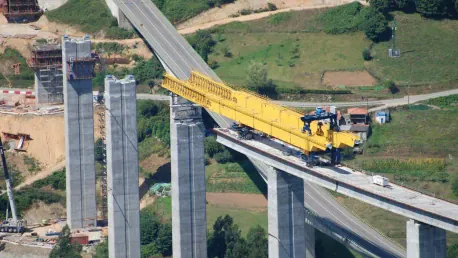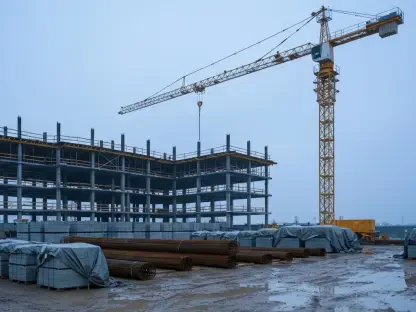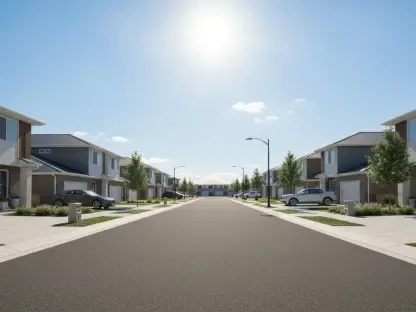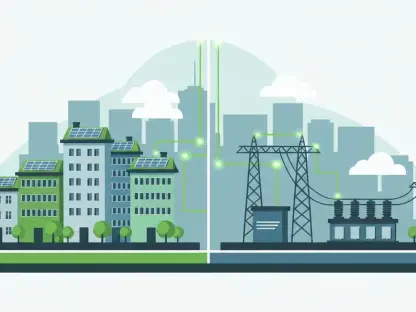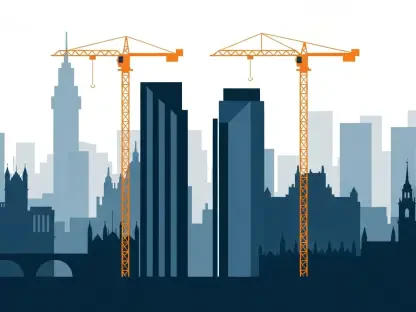Significant infrastructure improvements are underway on the I-70 corridor in Missouri and Kansas, with both states embarking on extensive projects to modernize and enhance sections of this vital transportation route. The highway travels from Utah to Baltimore, operating as a crucial lifeline for commerce and travel across the Midwest. These multimillion-dollar initiatives have been launched to address aging infrastructure, improve roadway safety, and boost travel efficiency. The planned upgrades are poised to make a remarkable difference, ensuring that this key interstate remains a secure and reliable artery for generations to come.
Massive Investment in Missouri
In Missouri, the I-70 extension project is a colossal undertaking from Warrenton to Wentzville. With a massive contract valued at $600 million awarded to the Improve 70 Alliance, it represents the largest single contract in the history of the Missouri Department of Transportation (Missouri DOT). This monumental project involves the collaboration of several key players, including Columbia-based Emery Sapp and Sons, Bartlett and West from Topeka, and Kansas City-based firms Clarkson Construction and HNTB. The primary focus is on constructing a third lane in each direction between Warrenton and I-64 in Wentzville, in addition to replacing the existing lanes with new concrete pavement.
Adding a third lane to both the eastbound and westbound sections of I-64 between I-70 and Route K is also part of the plan. According to Missouri DOT’s recent news release, these enhancements are designed to not only increase the capacity of the interstate but also significantly improve safety conditions and travel efficiency. With heavy traffic anticipated to increase in the coming years, this project aims to alleviate congestion and reduce accidents. It signals a strong commitment by Missouri to invest in the long-term sustainability and functionality of its transportation infrastructure.
Governor Kelly has underscored the long-term benefits of these modernization efforts at the groundbreaking ceremony, emphasizing how a state-of-the-art roadway can spur community and economic growth in the local area. These developments go beyond simple road repairs; they embody the strategic planning and future-oriented vision of the region’s transportation authorities. By enhancing road safety and providing better connectivity, the I-70 extension project is expected to generate profound positive impacts on commerce, travel, and overall quality of life for residents and travelers alike.
Kansas Takes on the Polk-Quincy Viaduct
Meanwhile, Kansas is making significant strides with the I-70 Polk-Quincy Viaduct project in Topeka. Governor Laura Kelly announced the commencement of this essential initiative, which focuses on a 2.5-mile stretch of I-70 running from Macvicar Avenue to 6th Avenue. This segment is part of the Kansas Department of Transportation’s Eisenhower Legacy Transportation Program. The joint venture Bettis Koss Construction, comprised of Bettis Asphalt & Construction and Koss Construction Co., has been tasked with executing this ambitious project, which includes building a new viaduct and widening I-70 to the west towards Macvicar.
The Kansas initiative bears the objective of replacing an aging viaduct to amplify safety, reduce congestion, and foster better connectivity with adjacent areas. With a planned completion date towards the end of 2027, work this year is particularly focused on constructing the new viaduct and laying the groundwork for the expansion. The goal is clear: to replace outdated infrastructure with a more resilient and safer design, ultimately ensuring smooth travel and bolstering economic interactions within the region.
Emphasizing the broader implications of this endeavor, Governor Kelly has highlighted the project as crucial for local economic growth and integration. The planned improvements are intended not just to serve immediate traffic needs but also to create conditions conducive to long-term societal benefits. Enhancements to the Polk-Quincy Viaduct will improve accessibility and connectivity, thus proving invaluable to local businesses, commuters, and travelers.
The Broader Impact of Infrastructure Enhancements
Both Missouri and Kansas have turned a corner with these ambitious infrastructure projects. By channeling resources into modernizing sections of I-70, a critical east-west transportation corridor, they are not just responding to current demands but are also anticipating future transportation needs. The projects, which involve comprehensive road widening, lane additions, and viaduct construction, represent a forward-thinking approach to infrastructure development. These enhancements are projected to yield substantial long-term benefits by ensuring safe, efficient travel and facilitating regional economic growth.
In Missouri, the extension project leverages state budget allocations to transform an often-congested section of the interstate with modern, durable materials that will withstand increased traffic volumes. The Kansas project, supported by a 10-year infrastructure investment plan, reflects a similar vision of future-proofing the state’s transportation assets. By focusing on long-term sustainability, both states exemplify how proactive investments in infrastructure can generate lasting societal and economic returns.
Future Prospects and Expected Outcomes
Looking ahead, the expected outcomes of these significant investments are numerous. In addition to improving safety for commuters and travelers, both projects are set to enhance the efficiency of freight and logistics operations, which heavily rely on this critical artery. Consequently, local businesses stand to benefit from improved transportation networks that enable quicker deliveries and more reliable supply chains. Furthermore, safer and more efficient roads can lead to a reduction in accident-related costs, benefiting both individuals and the broader economy.
The long-term vision underpinning these initiatives is equally noteworthy. By addressing outdated infrastructure now, Missouri and Kansas are setting the stage for future infrastructure projects that can build on this progress. Improved road safety, reduced congestion, and enhanced connectivity are expected to attract new businesses, promote tourism, and improve the overall quality of life in the surrounding regions.
Ongoing Commitment to Transportation Safety and Efficiency
Infrastructure improvements are currently in full swing along the I-70 corridor in Missouri and Kansas. Both states are undertaking extensive projects aimed at modernizing and enhancing significant segments of this essential transportation artery. Stretching from Utah to Baltimore, I-70 is a critical lifeline for both commerce and travel across the Midwest. The series of multimillion-dollar initiatives have been introduced to address aging infrastructure, enhance roadway safety, and optimize travel efficiency. These upgrades are expected to make a substantial impact, ensuring I-70 continues to be a secure, reliable, and efficient route for many years. The ongoing efforts aim to accommodate increasing traffic demands and support economic growth by facilitating smoother and safer travel. In essence, this modernization project is crucial for maintaining the integrity and functionality of one of America’s most important interstates, thus preserving its role as a key corridor for future generations.
